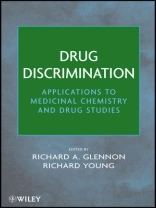Drug discrimination: a practical guide to its contributions to
the invention of new chemical entities and evaluations of new or
known pharmacological agents
Drug discrimination can be described as a ‘drug detection’
procedure that uses a pharmacologically active agent as the
subjective stimulus. Although the procedure does require some
effort to implement, it can be an extremely important tool for
understanding drug action. Whereas medicinal chemists should come
to learn the types of information that drug discrimination studies
can offer, pharmacologists and psychologists might come to realize
how medicinal chemists can apply the types of information that the
paradigm routinely provides. Drug Discrimination: Applications to
Medicinal Chemistry and Drug Studies provides in-depth analyses of
the nature and use of drugs as discriminative stimuli and bridges
some of the numerous gaps between medicinal chemistry,
pharmacology, and psychology.
Stressing the practical aspects of drug discrimination,
including types of procedures, study design, data, and
interpretation, the book details the advantages and limitations of
drug discrimination studies versus other pharmacologic evaluations.
Practical information from leading researchers in the field
addresses specific topics and techniques that are of interest in
drug discovery, evaluation, and development.
A groundbreaking new guide to the applications of drug
discrimination studies for medicinal chemistry and neuroscience,
Drug Discrimination is essential for any scientist, researcher, or
student whose interests involve the design, development, and/or
action of drugs acting at the level of the central nervous
system.
Mục lục
Part I.
Chapter 1. An Introduction to Drug Discrimination.
Chapter 2. Methodological Considerations.
Chapter 3. Drug Discrimination: Practical Considerations.
Chapter 4. Role of Stereochemistry in Drug Discrimination Studies.
Chapter 5. Drug Discrimination and In Vivo Structure-Activity Relationships.
Chapter 6. Drug Discrimination and Mechanisms of Drug Action.
Chapter 7. Drug Discrimination and Development of Novel Agents and Pharmacological Tools.
Part II.
Chapter 8. Perceptual Drug Discriminative Aspects of the Endocannabinoid Signaling System in Animals and Man (Torbjörn U. C. Järbe).
Chapter 9. Discriminative Stimulus Properties of Receptor Antagonists (Joseph H. Porter).
Chapter 10. The Discrimination of Drug Mixtures (P. Stolerman).
Chapter 11. Making the Right Choice: Lessons From Drug Discrimination for Research on Drug Reinforcement and Drug Self-Administration (S. Stevens Negus and Matthew L. Banks).
Chapter 12. Inhalant Drug Discrimination: Methodology, Literature Review and Future Directions (Keith L. Shelton and Robert L. Balster).
Chapter 13. Drug Discrimination Studies in Rhesus Monkeys: Drug Dependence and Withdrawal (Jun-Xu Li, Lisa R. Gerak, and Charles P. France).
Chapter 14. Human Drug Discrimination: Methodological Considerations and Application to Elucidating the Neurophar, acology of Amphetamines (Craig R. Rush, Andrea R. Vansickel, and William W. Stoops).
Chapter 15. Nicotine Discrimination in Humans (Kenneth A. Perkins).
Chapter 16. Drug Discrimination: A Perspective (Francis C. Colpaert).
Giới thiệu về tác giả
Richard Glennon is Chair of the Department of Medicinal
Chemistry at Virginia Commonwealth University. He is the author of
over four hundred scientific publications and book chapters.
Richard Young is an Associate Professor in the Department
of Medicinal Chemistry at Virginia Commonwealth University.
Previously, he worked in the pharmaceutical industry at Ayerst and
A. H. Robins (both now Pfizer).












